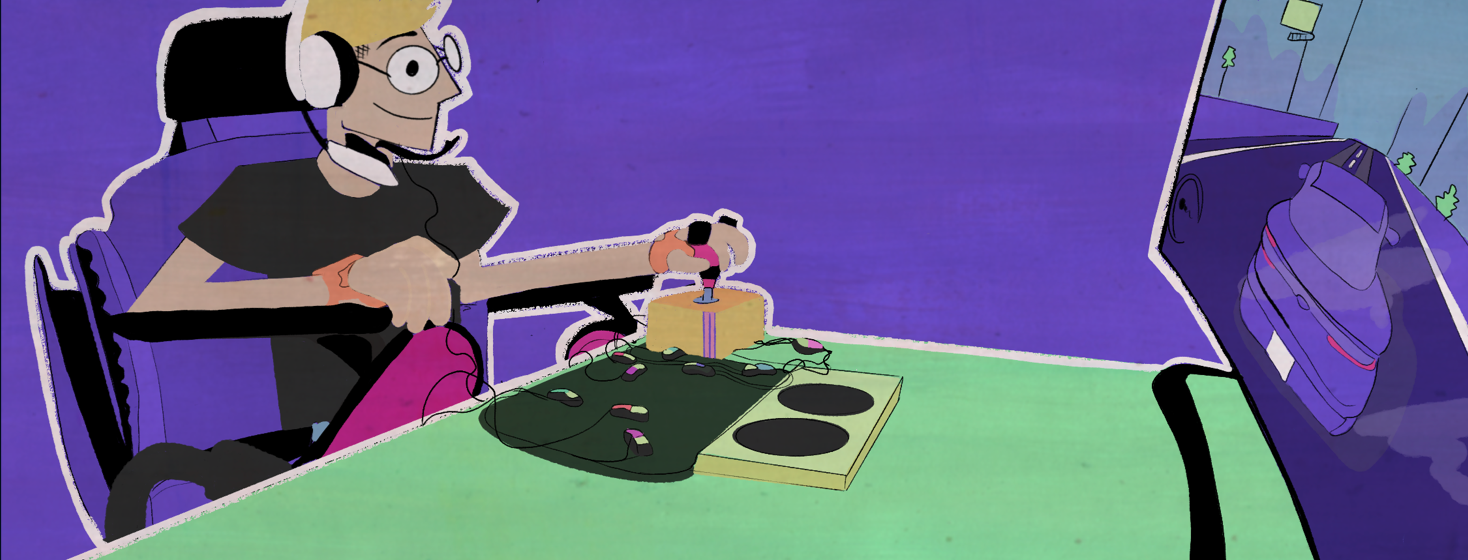Gaming with a Disability
Recently I went on a search to find an accessible hobby that didn’t include technology or staring at a screen. I didn’t have much luck since technology is a key component to independence when you have a disability or are using a wheelchair. But this turned my attention to the first hobby I loved, video games.
Gaming offered sense of freedom
Gaming had always provided a sense of freedom, while playing I could scale a mountain or be a professional football player. Obviously, those are things that aren’t possible for me to do in reality. Over time, though, I started losing more strength in my hands which made it difficult to hold the controller to play video games and press all the buttons.
I quickly gave up on gaming just out of frustration that I couldn’t play as well as I used to, and that fact reminded me that SMA is unfortunately always progressing. Using a computer or playing on my phone was still possible but I lost that sense of adventure and relaxation that Xbox or Playstation had provided to me.
Discovering improved accessibility
So, while wanting to get back into a hobby, I did research on what’s available to make gaming fun and accessible for people with disabilities. Turns out there are a lot more options for Xbox. Thanks, Microsoft!
First, I visited the website of a non-profit called The AbleGamers Foundation. They provide tons of resources specifically for adaptive technology that’s made for gaming. They even go as far as to break down resources by disability type, including muscular dystrophy. You can also consult with AbleGamers if you think you need help or a customized solution.
Putting together my adaptive gaming kit
I had heard about the Xbox Adaptive Controller from commercials and the internet but I knew that would only be part of my new setup. I’d still need buttons that I could move around to different parts of my legs or hands to make pressing them easier. Thankfully, Xbox and Logitech worked together to create the Adaptive Gaming Kit. This works in conjunction with the Xbox Adaptive Controller and for a reasonable price it comes with 10 buttons (including 4 micro touch buttons) as well as Velcro straps and non-slip lap boards.
I also headed over to Evil Controllers which is a small company that makes custom video game controllers and focuses on accessible options like one-handed controllers, lightweight controllers, and detached thumbsticks so they can be moved to comfortable and easy-to-reach positions. I ordered their Mini XAC Thumbstick and now it seemed my gaming setup was complete.
Altogether, everything cost a couple hundred dollars which isn’t bad considering what adaptive technology usually costs. But bigger companies like Microsoft, whether you like them or not, are able to manufacture and sell technology at a significantly cheaper price point.
Featured Forum
View all responsesSome lower-tech solutions
But creating an accessible gaming solution doesn’t just end with hardware to purchase. From Amazon, I bought the AceShot Thumb Grips by Foamy Lizard to raise the height of the thumbstick. Also, most consoles, including Playstation, allow players to re-map buttons. If a certain button is hard for your fingers to reach, change it to a button that’s easier. Certain games also let you customize the control layout; just check the game’s settings.
I’m still figuring out my accessible gaming setup and I know it’ll be a learning curve but now I have freedom and independence again and most importantly I’m having fun.
Connect in the Forum: What assistive devices have you found helpful?

Join the conversation